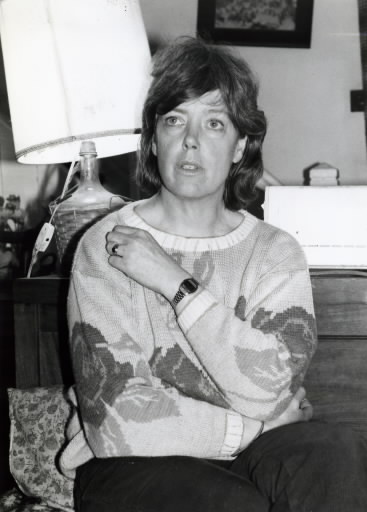4. Sellafield and Leukemia
Mar. 22, 2013
Chapter 5: Britain and France
Part 1: The Rough Road to Nuclear Supremacy
Part 1: The Rough Road to Nuclear Supremacy
The radioactive material accumulated over the years in water and on the land is not only having drastic effects on the traditional way of life on the Cumbrian coast, but is also threatening the health of the locals, plunging them into a state of panic about leukemia and cancer.
"Mum, I'm going to die, aren't I?" Janine Allis-Smith will never forget the day her son Lee, now aged seventeen, made this sad remark. It was the summer of 1984. Lee was in hospital and had just been told he had leukemia. "You'll be all right. You can fight it," she told him as she sat next to his bed, trying to hide her own fears. The Allis-Smiths live in the village of Broughton Mills in the southwestern part of Cumbria, an area that consists mainly of sheep farms.
"I'm starting to think that maybe it wasn't such a good idea to try and bring the kids up in a natural environment," Mrs. Allis-Smith said ruefully. The family had always spent their summer holidays swimming, fishing, and generally taking it easy at a beach on the Irish Sea coast. Little did they know that only just over a mile away the Sellafield nuclear complex was discharging radioactive waste into the sea.
Lee, a keen sportsman, first began to notice there was something wrong with his health at the end of 1983. In August the following year he broke out in blisters all over his body. He was taken to hospital in Manchester where he was diagnosed as having acute lymphatic leukemia and hospitalized immediately. He went through nine months of intensive treatment until May 1985. At first Janine did not make the connection between her son's illness and radiation from Sellafield. However, as his stay in hospital lengthened into months, she realized that in the same ward there were a number of other children with leukemia. She got talking to their parents and was surprised to find that all the leukemia patients had one thing in common: some connection with the Cumbrian coast. They were all children who had enjoyed swimming and playing on the beach.
Soon after Lee was discharged from hospital his mother followed up on the suspicions which had formed in her mind. By inquiring at the district health authorities and reading what specialist publications had to say about the effects of radiation on the body, she gradually built up a picture of the connection between Sellafield and leukemia. Her next task was a careful investigation of all the leukemia patients in the area and the circumstances surrounding their illnesses, including those children who had already died. To do this, she built up a network of parents of leukemia patients in her spare time, sending out a six-page questionnaire to the parents of any new cases she heard of. The questions were concerned with matters such as parents' health, the mother's pregnancy, the child's everyday habits, the details of their illness, and so on, a total of thirty questions in all. The thirty-five replies she has received so far all point to a connection with the nuclear complex.
"I know there are other patients," she said. "But they have family working at the plant and they're afraid of being laid off, so they don't reply." The thirty-five families who replied are united in their aim to prove in court that their children's illnesses were caused by exposure to radiation from the nuclear facilities at Sellafield. To this end the families applied for legal aid to enable them to sue British Nuclear Fuels (BNF). Their first applications were dismissed, although after an appeal in March 1989, eighteen families were granted financial assistance to go to court. This initial victory has given a great deal of encouragement to Janine Allis-Smith and the other parents, and at the time of writing they were busy gathering and organizing evidence for the case. Their action is the first such case in the world to be filed against a nuclear power plant on behalf of people suffering from leukemia.
"Sellafield has hidden too many things from the public, and it's marvelous to get this opportunity to force BNF to account for their actions in court," Janine told us. "It just makes me so angry when I think of my son and all those children living in fear, never knowing when leukemia is going to strike them down again."







